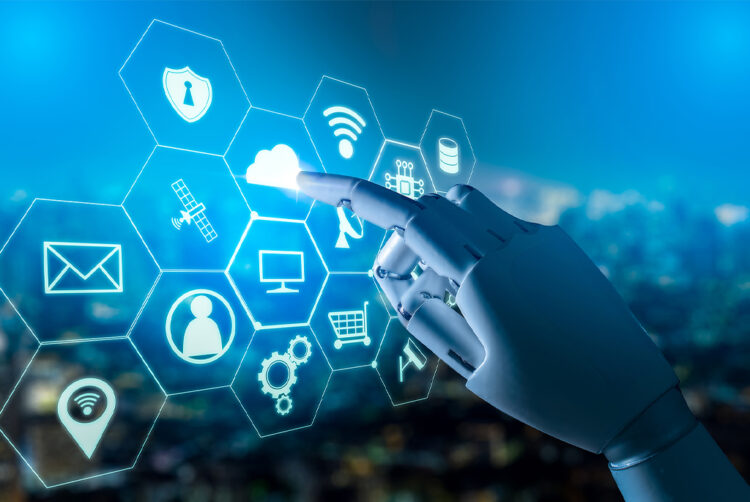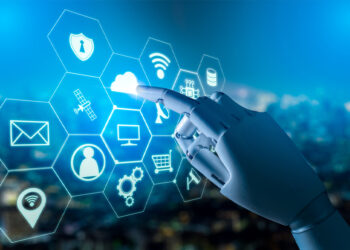The Evolution Accelerator: Gadget Trends Redefining Tomorrow
Technology is not a static field; it is a relentless, accelerating force driven by consumer electronics—the gadgets we use every day. These devices are the physical manifestation of digital innovation, acting as the primary interface between humanity and the rapidly evolving digital world. The current landscape is defined by trends that are blurring the lines between physical and virtual realities, demanding more intelligent processing power, and prioritizing seamless integration into daily life. Understanding these dominant trends is crucial, as they are actively redefining tomorrow and creating massive economic and social opportunities.
The gadgets emerging today are profoundly different from those even five years ago. They are smarter, more context-aware, highly personalized, and increasingly designed to work as a unified ecosystem rather than standalone devices. This shift is fueling market competition, generating enormous data volumes, and providing high-value content opportunities.
This comprehensive guide will dissect the six major Tech Trends Shaping Our Future, exploring the intricate technologies, the profound user experience changes, the industrial implications, and the challenges these innovations present. From the rise of immersive computing to the dominance of specialized AI chips, this is the essential roadmap to the next era of personal technology.
The Domination of Immersive Computing (XR)
Immersive computing, encompassing Virtual Reality (VR), Augmented Reality (AR), and Mixed Reality (MR) – collectively known as Extended Reality (XR) – is transitioning from niche gaming to a foundational computing platform.
1. Head-Mounted Displays (HMDs) as Primary Computing Devices
HMDs are evolving from bulky headsets to sleek, powerful devices designed for daily use, challenging the dominance of smartphones and monitors.
- High-Fidelity Visuals and Passthrough Technology: Newer HMDs feature ultra-high-resolution displays and advanced lens technology to eliminate the “screen-door effect.” Crucially, full-color passthrough uses external cameras to project the real world onto the internal screens, enabling true mixed-reality applications where digital objects interact realistically with the physical environment.
- Spatial Computing Platforms: Companies are building entire spatial operating systems that allow users to manage multiple virtual 3D screens and applications within a shared physical space. This transforms professional collaboration, design, and entertainment by freeing the user from the limits of a flat monitor.
- Ergonomics and Weight Reduction: The viability of daily use hinges on comfort. Significant engineering effort is dedicated to miniaturizing components, optimizing weight distribution, and utilizing advanced materials to make headsets lighter, smaller, and more balanced for prolonged wear.
2. Augmented Reality (AR) in Everyday Gadgets
The most accessible form of XR, AR is being integrated into devices we already use, creating a “digital overlay” on reality.
- AR in Smartphones (Visual Search and Navigation): Advanced AR algorithms in smartphone cameras are used for instant visual search (identifying objects, plants, or landmarks) and enhanced navigation, superimposing directions onto the live camera feed of the road ahead.
- Smart Glasses as the Next Evolution: The long-term goal is to replace smartphones with lightweight AR smart glasses that seamlessly overlay notifications, digital information, and virtual objects onto the user’s field of vision, acting as a discreet, always-on digital assistant.
- Enterprise AR for Productivity: In industrial and medical fields, AR glasses guide technicians through complex repair procedures with step-by-step digital instructions or allow surgeons to view patient data and X-rays directly onto the patient’s body during an operation.
AI’s Hardware Revolution (Edge Computing)
The rise of complex Artificial Intelligence (AI) models demands a fundamental change in gadget hardware, moving processing power from distant cloud servers to the device itself.
1. Specialized AI Silicon and Neural Engines
General-purpose CPUs and GPUs are no longer sufficient for complex, real-time AI tasks.
- Dedicated Neural Processing Units (NPUs): Modern system-on-chips (SoCs) now feature dedicated Neural Processing Units (NPUs). These are custom accelerators optimized specifically for running machine learning models (like those used for image processing, voice recognition, or predictive text) with extreme energy efficiency.
- Inference at the Edge: Moving AI processing from the cloud to the local device (the edge) ensures instant response times, crucial for tasks like real-time language translation, secure facial recognition, and context-aware camera features, all without requiring a constant internet connection.
- Enhanced Privacy: Edge AI fundamentally improves user privacy. Since sensitive data (such as voice recordings or facial images) is processed locally on the device and never sent to the cloud, the risk of interception or large-scale data breaches is significantly reduced.
2. Generative AI in Personal Devices
The power of generative AI is now being integrated into core applications and gadgets, changing how we create and interact.
- Instant Image and Video Generation: Mobile chips are becoming powerful enough to run local generative AI models, allowing users to instantly modify photos, create short video clips, or even generate unique wallpapers and avatars on the fly.
- Personalized Digital Assistants: AI assistants are moving beyond simple commands. They learn user habits, anticipate needs, and proactively manage tasks, acting as true personalized AI companions that integrate across all the user’s devices.
- Code and Text Augmentation: AI is embedded directly into mobile word processors and coding environments, offering real-time suggestions, error correction, and even the ability to generate entire blocks of code or draft emails based on minimal prompts.
 The Ubiquity of Seamless Connectivity
The Ubiquity of Seamless Connectivity
The true power of modern gadgets lies in their ability to communicate instantly and reliably, forming a seamless, omnipresent network.
1. Next-Generation Wireless Standards
Faster, more efficient, and pervasive wireless standards are the backbone of the integrated gadget ecosystem.
- Wi-Fi 7 (802.11be) and Low-Latency Performance: Wi-Fi 7 offers significantly increased bandwidth, lower latency, and higher speeds than its predecessors. This is essential for power-hungry applications like high-fidelity VR streaming, cloud gaming, and simultaneous 4K video streams throughout the home or office.
- 5G and Beyond (6G): The widespread rollout of 5G provides unprecedented mobile data speeds and low latency, enabling true mobile edge computing. Research into 6G focuses on massive connectivity, integrating AI and sensing capabilities directly into the network itself.
- Ultra-Wideband (UWB) for Spatial Awareness: UWB technology enables highly accurate, short-range spatial awareness. Gadgets equipped with UWB can precisely determine their location relative to other devices, enabling advanced features like highly accurate directional file sharing and precise digital key functionality.
2. Device Interoperability and Ecosystem Lock-in
The most valuable gadget ecosystem is the one that works flawlessly across different devices.
- Standardized Communication Protocols: Industry initiatives are pushing for standardized communication protocols to ensure devices from different manufacturers can discover, connect, and interact seamlessly, especially in the smart home environment.
- Cross-Device Continuity Features: Ecosystems are focused on continuity, allowing tasks—like starting a call on a phone and transferring it instantly to a laptop, or copying text on a tablet and pasting it on a desktop—to flow effortlessly between devices.
- Secure Digital Identity: Future gadgets will rely on a single, highly secure digital identity that travels with the user across all devices, simplifying login, payment, and access control while maintaining robust security (e.g., through hardware keys and biometric verification).
Health, Wellness, and Wearable Biometrics
Wearable technology has moved beyond simple fitness tracking to becoming sophisticated, personalized health monitoring systems.
1. Advanced Biometric Sensing
Gadgets worn on the body are gathering increasingly detailed and medically relevant physiological data.
- Continuous Glucose Monitoring (CGM) and Non-Invasive Sensors: The goal is to develop reliable, non-invasive sensors in watches or rings that can accurately monitor metrics like blood glucose, blood pressure, and hydration levels without the need for needles or cuffs.
- Electrocardiogram (ECG) and Advanced Heart Health: Smartwatches routinely offer medical-grade ECG capabilities, providing data that can help detect early signs of serious heart conditions like atrial fibrillation. The data is often integrated directly into electronic health records.
- Sleep Stage Analysis and Recovery Tracking: Wearables use heart rate variability (HRV), skin temperature, and movement data to provide highly granular analysis of sleep cycles (light, deep, REM), offering personalized recommendations for optimizing rest and physical recovery.
2. Integrating Gadgets into Healthcare
Wearable data is moving from a personal curiosity to a critical asset in preventative healthcare.
- A. Remote Patient Monitoring (RPM): Doctors use data from approved wearable medical devices to monitor patients with chronic conditions remotely, allowing for earlier intervention and better management of diseases outside of a hospital setting.
- Proactive Health Alerts: AI algorithms analyze continuous biometric data streams to spot subtle deviations from a user’s normal baseline, issuing proactive alerts that could indicate the onset of illness, stress, or infection before symptoms are physically noticeable.
- Mental Wellness Tracking: Devices are starting to track proxies for mental state, such as continuous stress levels measured by skin conductance or heart rate variability, offering guided breathing exercises or prompting users to take mindfulness breaks.
 Sustainability and Ethical Gadget Design
Sustainability and Ethical Gadget Design
As technology becomes pervasive, the environmental and ethical footprint of gadgets is becoming a critical consumer and regulatory concern.
1. The Circular Economy for Electronics
Manufacturers are under increasing pressure to design products that minimize waste and maximize resource efficiency.
- Modular Design and Repairability: The shift toward modular design allows users to easily replace individual components (batteries, screens, ports) without needing specialized tools. This extends the lifespan of the gadget and supports the Right to Repair movement.
- Recycled and Sustainable Materials: Companies are prioritizing the use of recycled plastics, metals, and rare earth minerals in device construction. This reduces the reliance on new mining operations and lowers the overall carbon footprint of manufacturing.
- Energy Efficiency and Standby Power: Gadgets are engineered to achieve extreme energy efficiency, especially when idle. Low-power modes and optimized standby functions minimize the cumulative energy consumption of billions of connected devices globally.
2. Ethical AI and Data Privacy
The intelligence in new gadgets raises complex ethical questions about surveillance and data usage.
- Data Minimization and On-Device Processing: Ethical design principles focus on data minimization (only collecting data essential for function) and maximizing on-device processing to ensure privacy is built into the core architecture of the gadget.
- AI Transparency and Explainability: Users demand to know how and why an AI makes a particular decision. Explainable AI (XAI) provides insights into the logic of the algorithm, building trust and allowing developers to identify and eliminate systemic bias.
- Digital Well-being Tools: Gadgets are integrating features designed to help users manage their relationship with technology, including screen-time limits, focus modes, and notifications aimed at encouraging face-to-face interaction over device usage.
The Future: Ambient Computing and Digital Twin
The final frontier for gadgets involves their disappearance into the environment and the creation of highly accurate digital copies of the real world.
1. Ambient Computing and the Invisible Interface
The goal of Ambient Computing is to make the interface disappear, embedding intelligence seamlessly into the environment.
- Context-Aware Sensors: Sensors for light, temperature, presence, and sound will be embedded everywhere—in walls, furniture, and clothing—allowing the environment to react intelligently and proactively to the user’s needs without explicit input.
- Interacting via Voice and Gesture: Users will interact with the computing environment primarily through natural human communication—voice commands, subtle gestures, and even changes in body language—eliminating the need for constant screen interaction.
- The End of the Single Device: Computing power will be distributed across the environment. Your phone might simply be a secure authentication key, with the display appearing on any available surface or smart glasses when needed.
2. Digital Twin and the Virtual Real Estate
Future gadgets and sensors will continuously feed data into the creation of a Digital Twin—a real-time, high-fidelity virtual replica of the physical world.
- Real-Time Data Mapping: Sensors in our gadgets and infrastructure will constantly map and update the virtual world, ensuring the digital twin is a mirror of current reality.
- Predictive Modeling: This digital twin can be used for sophisticated predictive modeling, simulating the impact of urban planning decisions, climate events, or traffic changes before they occur in the physical world.
- Interaction with Physical Objects: AR gadgets will allow us to interact with the digital twins of physical objects, viewing maintenance histories, operational data, or augmented instructions simply by looking at the object.
The current gadget trends signify a pivotal shift toward a future that is hyper-intelligent, seamlessly connected, and deeply intertwined with human biology and well-being. The device is moving from a possession to a personalized, context-aware partner, and the innovators who master this complex convergence will undoubtedly shape the future of technology for decades to come.












